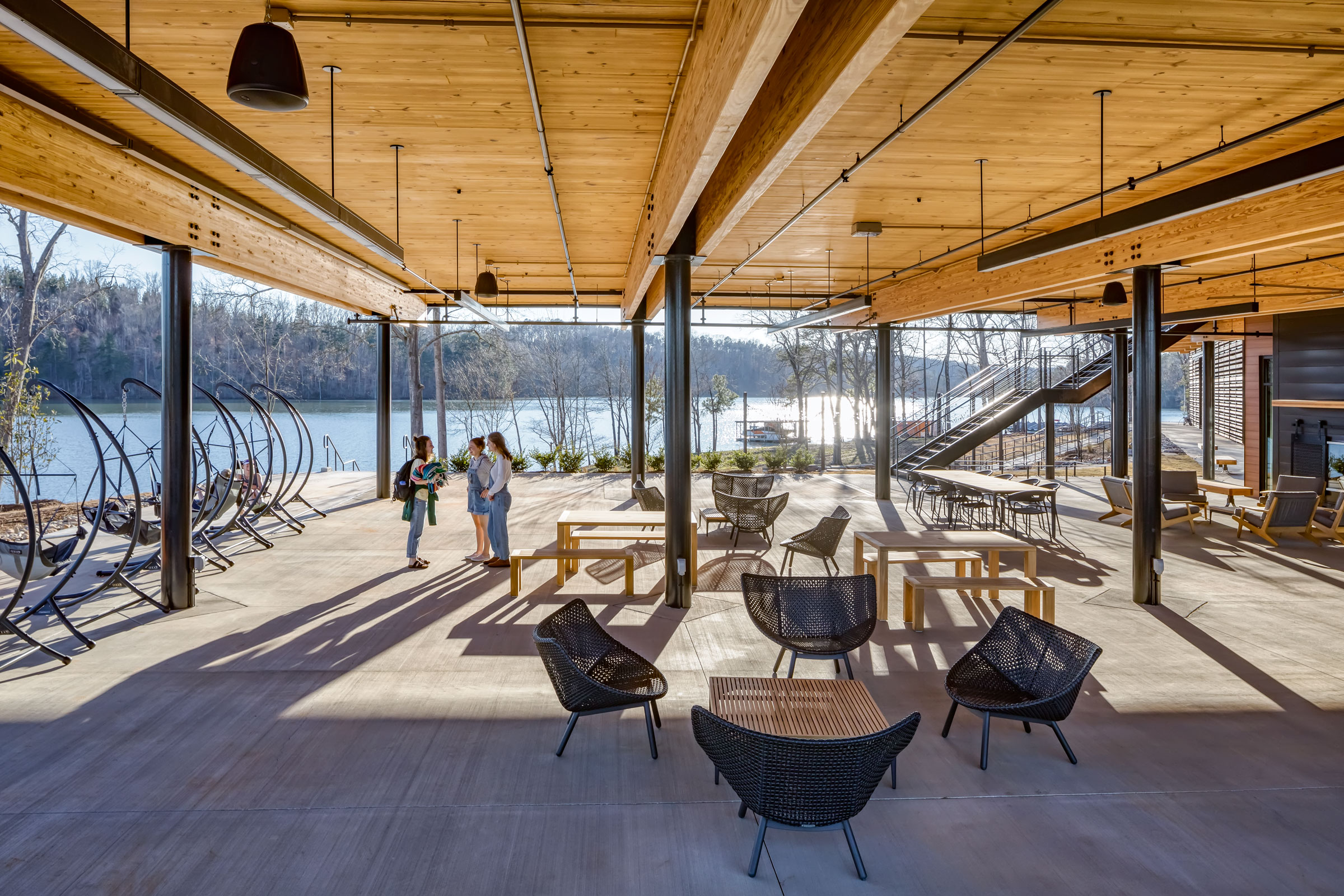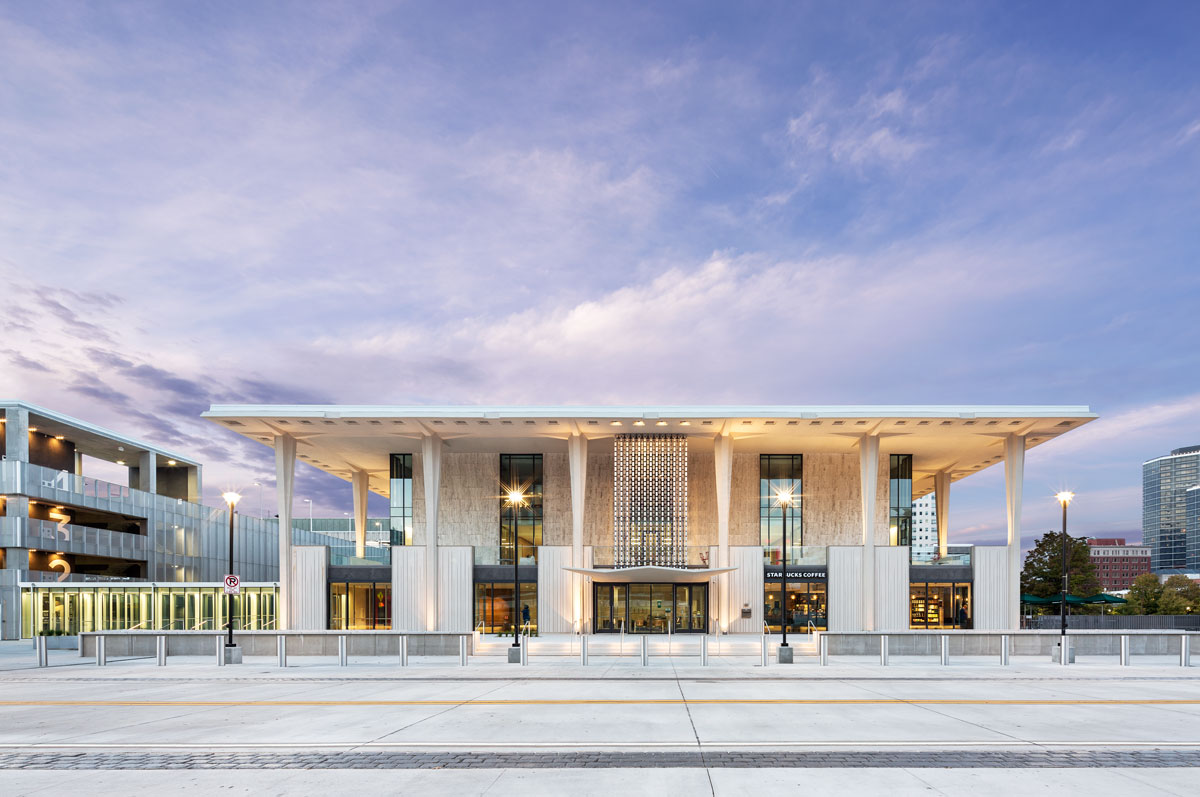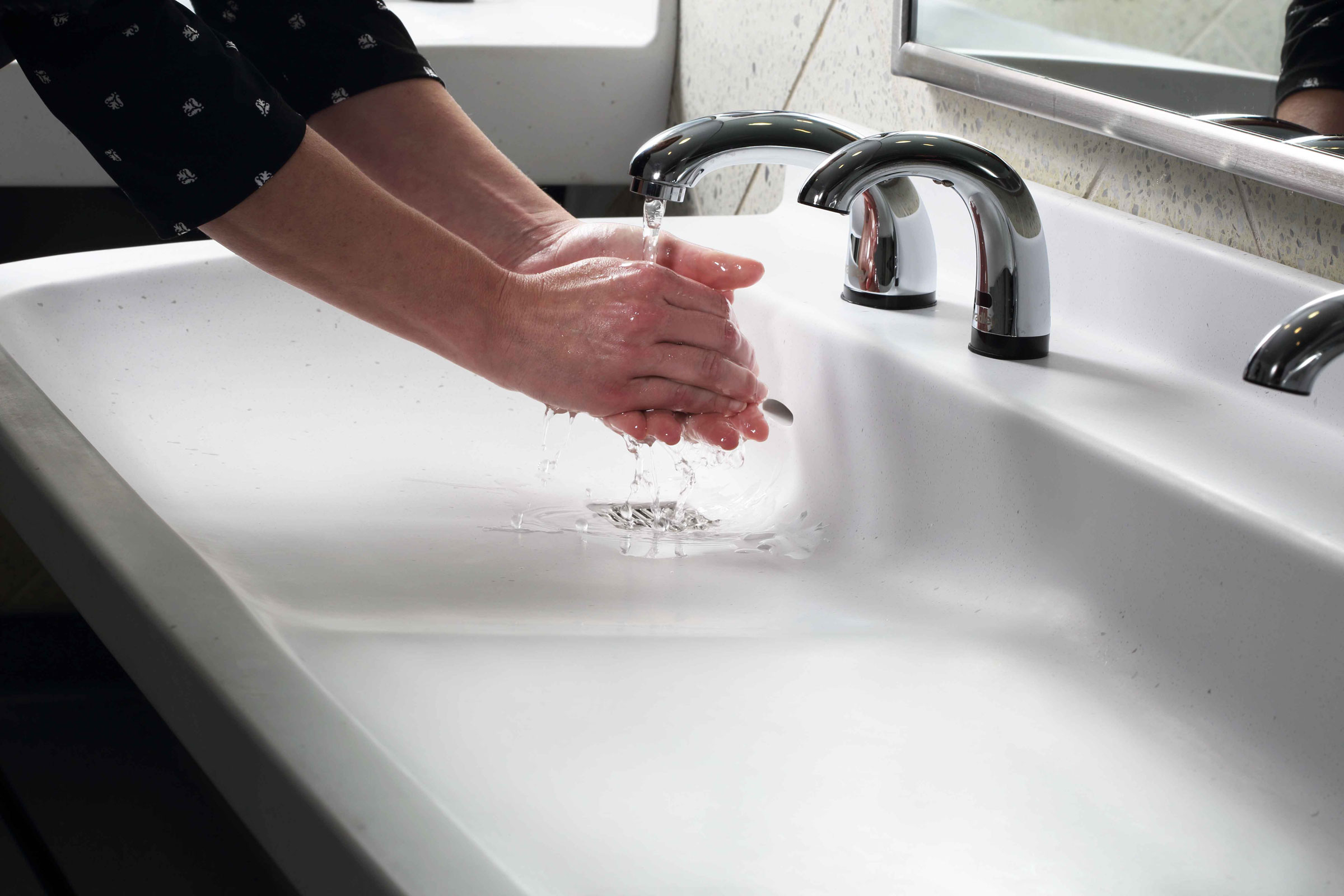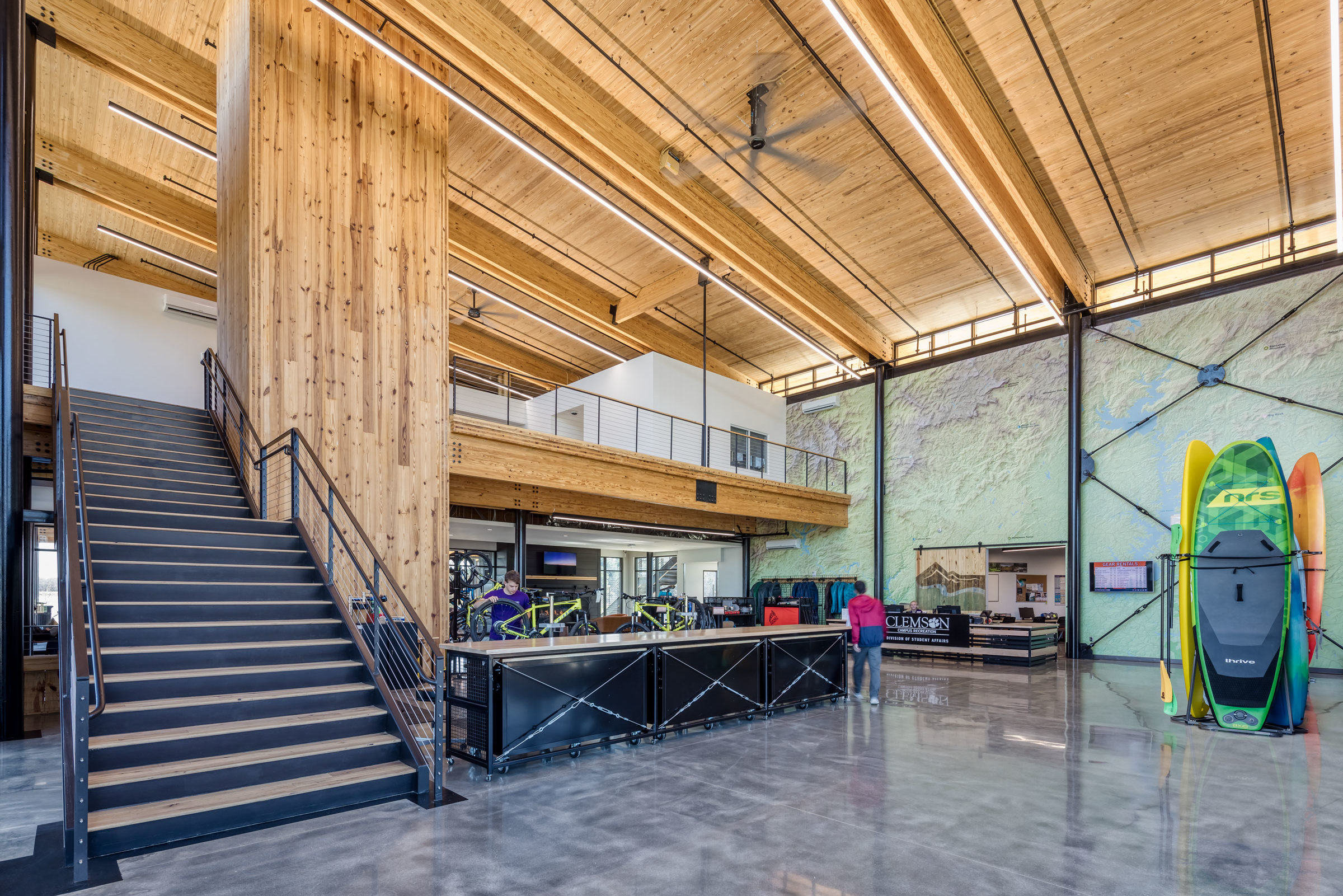In the midst of the COVID-19 pandemic, manufacturers and architects alike continue to consider touchless technology products and surfaces in new ways. Germs, perhaps now more than ever, are top of mind.
gb&d has talked to some of the industry’s top experts to explore how more surfaces can be not just avoided, but eliminated, with touchless technology products.
Even AARP reports on how technology is making many of our lives easier with smart locks, touchless faucets, and more.
These are just some of the latest innovations we’re following.
1. Gesture Recognition

The Andy Quattlebaum Outdoor Recreation Center at Clemson University. Photo by Jonathan Hillyer
The pros at Delta Controls recently shared with gb&d how making a truly touchless office is coming closer to a reality, with solutions that reduce or eliminate contact with commonly used objects in a workplace altogether using touchless technology like the wave of a hand.
Delta Controls’ Robert Hemmerdinger writes: “In a touchless office, the door can be automated using sensors at the entrance or near-field communication between a door access point and a user’s phone. People won’t need to touch the door handle to gain access to the space. Once they’ve entered, lighting can be adjusted automatically, and temperature preferences can be input with the user’s phone.”
Projects like the Andy Quattlebaum Outdoor Recreation Center at Clemson University even use sensor-controlled lighting.
2. Facial Recognition

Delta Controls touchless access systems allow smartphones to grant access and control room temperature and other environmental factors. Courtesy of Delta Controls
In general touchless access systems run the gamut, from the aforementioned gesture recognition to biometric verification—think facial recognition over fingerprints for gaining access to sensitive documents or even entry into a building.
3. Password Verification

Inside this Tulsa Library, a fully automated lighting system utilizes daylight harvesting, scheduling, and vacancy and occupancy sensors. Photo by Lara Swimmer
Use your smartphone to do everything from control light sensors to manage the temperature or open doors.
A Carleton Institute for Civil Engineering study showed that a common light switch is touched once every two hours, but what if you could avoid touching that switch entirely? You can with automatic lighting solutions and access control on its own network or subnetwork.
Building automation software can connect directly to access and door control using Bluetooth, WiFi, and IP communication. Lighting can be controlled using any number of protocols starting with dedicated communications, such as the DALI lighting protocol to more open systems like those mentioned for access.
4. Motion Detection

Bradley’s Express Lavatory Systems like the new Express GLX Series and Express TLX Series has a Terreon Solid Surface for superior durability. Pictured here is Bradley’s Express-ELX Series. Courtesy of Bradley Corp.
Hands-free bathroom design has been using motion sensors for years, and the technology is only getting stronger. Just look at Bradley Corp., a leader in touchless technology—especially when it comes to safe school design. Bradley’s Express Lavatory Systems, including new Express GLX Series and Express TLX Series, made of Terreon® Solid Surface, offer a streamlined trough design that’s touchless and easy to clean.
Then there’s options like those from Excel Dryer, with solutions like the integrated XLERATOR Hand Dryer sink system that goes beyond touchless hand-drying to offer motion-sensor activated soap and water, too. We’ve seen Excel Dryer products everywhere from Brooklyn Bowl to New York City’s Grand Central Terminal. The hands-under, sensor-activated design of Excel Dryer hand dryers provide a touchless and hygienic hand drying solution for commercial facilities of all types.

